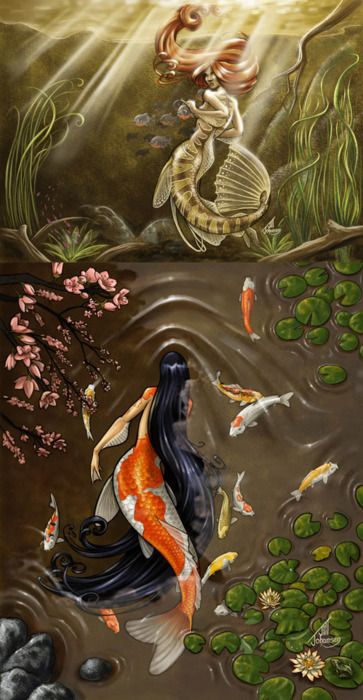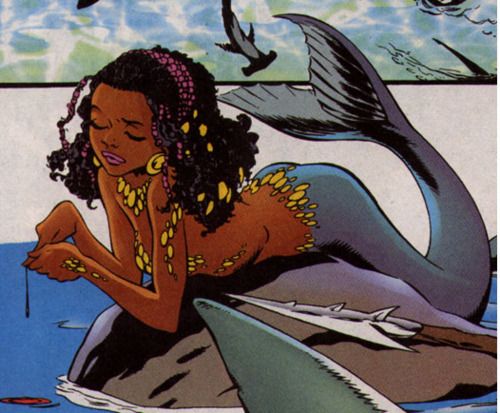Monthly Archives: May 2015
20 EASY WAYS READERS CAN HELP PROMOTE A BOOK
Chris The Story Reading Ape's Blog
To read this very informative article by Jody Hedlund, click on the image or link below:
Growing Up Millennial
Great look
 As a person born in the 90s, I am classified as a millennial, which means I am everything that is wrong with the world today. I stare at a screen instead of talking to people. I expect everything handed to me. I am lazy. I binge watch television shows. I overuse the word “binge”. I expect a trophy when I fail. I take selfies everywhere. I am narcissistic. I am entitled. I don’t read the newspaper. I spend too much time on “The Twitter.”
As a person born in the 90s, I am classified as a millennial, which means I am everything that is wrong with the world today. I stare at a screen instead of talking to people. I expect everything handed to me. I am lazy. I binge watch television shows. I overuse the word “binge”. I expect a trophy when I fail. I take selfies everywhere. I am narcissistic. I am entitled. I don’t read the newspaper. I spend too much time on “The Twitter.”
Or at least that’s how I’m categorized.
As if I’m a book and my date of birth is the summary on the back, telling everyone exactly what I’m about.
I feel as though there is a sense of pride that people have for growing up when they did. I look back on the 90s and am thrilled to call that decade my childhood. Just as people born in…
View original post 1,032 more words
Graduation keeps one busy
Sorry about the slow number of posts and reblogs lately, preparing for college graduation has limited my posting for the past two weeks. I hope to be back on a decent schedule by next month. Until then!
Merfolk: Part 2
Culture
Ethnic Groups: habitats-provisioning(food gaining)-agriculture-livestock-game-clothing-other notes
Brackish
Geographic range: swamps, marshes, mangroves, lagoons, large lakes, large rivers
Provisioning: foraging, shifting cultivation, free range farms
Agriculture:sea grass, duckweed, cattails, wild rice, watercress, water pepper, water spinach, wasabi, water chestnut/caltrop, taro, lotus, bulrush, bamboo, cord grass, shrub fruit and nuts, peanuts, chestnuts
Livestock:carp, small mouth bass, cod, salmon, duck, crayfish, goose, river mussels, tilapia
Game:large dragonflies, large mosquitoes and larvae, large mouth bass, catfish, bullhead, crappie, bluegill, black buffalo, pike, lake sturgeon, war-mouth, paddle fish, rainbow trout, fathead minnow, river otter, beaver
Common physical features:
- aquatic skin resembles coloring of following fish: goldfish, koi carp, guppy, catfish, molly, rainbow-fish, tiger-fish, angelfish, discus
- darker shades of hair
- fined tail changes to legs slightly faster
Societal Behavior: Brackish merfolk tend to be insular and distrustful of strangers, but individuals, especially adventuring Merfolk, break the mold and can be quite boisterous. Often they are more open to beings that live within their regions like Lamia who are similar in appearance and culture. Brackish merfolk are more likely to venture on land and even have alternate land based settlements near bodies of water. Adolescent merfolk often have a vacation season at the same time as adolescent and emerging adult jungle and island homins and fairies, resulting in mutual party going, dancing, and temporary romances and sexual experiences.
Marine
Geographic range: coral reefs, kelp forests, tropical sea-grass beds, half-submerged caves, cliff-walled caves, mangroves, oceanic islands
Provisioning: foraging, fisheries, seabed and tide pool gardens, coral gardens
Agriculture:giant kelp, green algae, sea grasses, beach grasses, drift fruit and seeds
Livestock:sponges, parrot fish, tuna, striped bass, crabs, shrimp, clams, oysters, scallops, barnacles, soft corals, lobsters, krill, sea cucumbers
Game:
forage fish– anchovies, reef squid, menhaden, sardines, herring, pollock
large pelagic– bill fish, bonito, mackerel, salmon, small sharks, large squid, octopus, sea urchins
birds-gulls, auks, gannets, pelicans
mammals-sea otter, ringed seal, Caspian seal
Common physical features:
- aquatic skin resembles coloring of following fish: clown-fish, butterfly-fish, cardinal-fish, damsel fish, parrot-fish, dragnets, file-fish, rabbit-fish, gobies, hawk-fish, yellow tangs, trigger-fish, blue wrasse, rainbow wrasse, lion fish
- lighter shades of hair
- ears are more likely to be finned
- legs change into finned tails slightly faster
Societal Behavior:
Marine merfolk started off as bands and tribes of nomadic foragers and some of these still exist in less traveled waters who mostly consisted of forage fish. With the creation of nation states, they were able to collect larger pelagic creatures to feed their populous but this lead to the creation of distinct classes and a ruling government. Marine merfolk themselves are quite playful with various sea creatures primarily dolphins, most whales, and sea turtles. Being the only beings in the sea with fine articulation has allowed them to manipulate many materials unique to the oceans such as kelp, animal secretions, and coral.
Marine merfolk generally shelter themselves in hidden communities, fiercely protecting the territory they hold from outsiders. Merfolk historically have been distrusting of surface races, and went to great lengths to conceal their presence from those that live primarily on land. This has changed since the United Sentient Species attempts to foster unity between races by funding for large underwater cities filled with buildings, connected by networks of reinforced glass tunnels, bathysphere transport systems, and submerged railways. As a result, most smaller merfolk settlements remain unknown to those on the surface, and encounters between marine merfolk and surface dwellers are uncommon, outside of urban areas.
Architecture
Merfolk structures often incorporate unique materials and features which results in distinct a architectural style. Wooden materials are uncommon due to the effect of woodworms. Instead, Merfolk make use of a variety of durable marine building materials:
- Kelp – Many merfolk buildings are made by weaving living kelp into a hollow ball that floats in the water while anchored to ocean floor. There can be several rooms arrayed in a daisy chain, one above the other, all constructed from only a few plants.
- Sea grass – Sea grass is used as a filler material in thatching and living sea grass is planted on the roofs of buildings as an anchor or decoration.
- Coral – Coral is tough easily workable, and abundant in tropical climates. It is used all over the aquatic world.
- Stone – Used in alone or in combination with hydraulic cement, stone is one of the best materials for durability
- Hydraulic cement – hydraulic cement is a building material in use since ancient times and is known for its ability to harden underwater. Hydraulic cement is combined with sand or other materials to create concrete structures, or is used in mortar to create masonry buildings
- Giant bones – The bones of giant sea creatures such as whales and sea serpents are and strong and durable enough to be excellent building materials
- Giant shells – Some sea shell are large enough to be used by themselves as rooms in buildings. smaller ones are used in “shell masonry”
- Wood – Freshwater merfolk often use wood to build their structures, because woodworms do not live in freshwater.
Spirituality
Many indigenous merfolk beliefs followed deities that had dominion of the seas and tides. After the collapse of divine pantheons, groups transferred faith to nature itself or the idea of an living force in magical energies or “wild magic”.
As an extension of this idea, certain animals were sacred and culturally treated with respect no matter ones belief or lack thereof. Frogs and newts are this for the brackish, and dolphins and whales for the marine community.
Various introduced religions followed by various Merfolk individuals include:
- Islam (Jinn)
- Naturalism
- Buddhism (Mostly Theravada)
- Deism
- Hinduism
- Pan deist
- Secular
Gender/Family
Mermaids far outnumber mermen. In merfolk culture, mermaids typically hunt. They also, by virtue of vastly overpopulating their male counterparts, tend to rule merfolk society. Mermen, by contrast, tend to be “soldiers” to their “queens”.
While promiscuous outside of their race and, in fact, known for their loose sexual attitudes, merfolk nevertheless often choose to mate for life with each other. When couples marry, the man leaves his mother’s family and goes to live with the woman in her family. Married men often have two names, their own and their wife’s, while women only ever have one. The duties of a husband are to be a partner and aid to his wife, including doing all the physical work that needs doing in the family group and also helping to raise their children.
Since most merfolk live & travel in pods of up to 12, once children are added into the mix, raising them is a group effort.
A merfolk is officially adult once he or she copulates. This may sound strange to other cultures, but the merfolk see it as a sign that the now adult merfolk is responsible enough to conceive children of her own.
Education
As a merfolk ages, they are given a sort of tutelage. This tutelage consists of all the necessary skills to live in the harsh aquatic environment. They learn to hunt, communicate in their language and a set of other useful skills for survival.
Those in developed nation states may go on to continue their education for specialized professions in centers of formal education.
As spell casters, they tend to be quite good in specific areas. Their mystical relationship with water makes it easier for them to use magic related to liquids and gases. The legendary water magic that altered their ancestors to live in the oceans were lost since ancient times, but some of that affinity still remains.
Dress/Modesty
Merfolk weave a crude kind of fabric from seaweed drying along the shoreline, called seaweed cloth, that is used for garments, rope, and even baskets. Shells or pieces of coral with small holes in them form necklaces the merpeople may wear around their necks and sometimes loop along their tails.
Merfolk of both major cultures are very liberal in their views on appropriate clothing. Nudity is a non-issue for children and is also the case for un/contacted clans and tribes. Being a species where females traditionally hold community and household influence generally means that chests of both sexes tend to not be covered.
Societal Organization
The major Marine merfolk countries are an oligarchy, in the form of a coalition of queens who are from the same family instead of a single queen. Therefore, if one queen produces only sons, the loss of her lineage and office could be offset by another queen producing multiple daughters who all become queens instead of just the eldest. The queen is chosen from women of a suitable age from one of the ‘royal houses’. The female ruler can even keep several male consorts, it doesn’t matter because only her female children will inherit the throne, though male kids may be granted small lordships or minor offices to make them useful to the crown.
Science and Technology
Weaponry
Many weapons suffer reduced effectiveness under water due to hydrodynamic drag. Merfolk therefore use weapons that are specially designed to eliminate drag and increase ergonomics for submerged use. Some weapons are unchanged but the techniques for their use underwater is radically different.
Mermen commonly employ tridents and javelins as weapons, although spears, daggers and underwater crossbows are also common.
The Merfolk have developed their martial arts strongly on thrusting and grappling, since those are the most efficient ways to fight underwater. They therefore prefer polearms and short swords above all other weapons, though they have also been trained to use longer swords quite well.
Traditional Weaponry
- Partisan – A partisan is a pole-arm similar to a spear but it has a much larger spear point and prongs on either side of the blade. it could accurately be described as a sword on a pole.
- Great trident – This trident has 3 large bladed points and is capable of delivering grievous wounds.
- Mersarissa – A very long spear for use in underwater army formations. it has a large blade and reach.
- Chain Net – A net made of fine chain links or cable instead of rope. It has small barbs that cut a trapped creature as it struggles.
- Katar – A short sword that attaches to the forearm instead of being held by the handle
Armor and Shields
There are several considerations to make when using armor underwater, drag and buoyancy. Merfolk armors are usually form fitting and flexible. Medium and heavy armors usually use some form of buoyant material for padding such as kelp pods or cork. Shields are designed to have as little drag as possible when moving them laterally and also have small buoys distributed to the inner surface. Tower shields are extremely rare in the underwater world because they are simply too unwieldy and the reduced danger from ranged weapons. They have been reduced to specialty applications or for merfolk fighting on land.
- Sharkskin leather armor – Basic leather armor has the same properties as land based leather armor.
- Padded – This padded armor uses aquatic fibers to give its wearer some protection.
- Chain shirt – Chain shirts built by merfolk smiths tend to be tighter fitting than those on land to reduce drag.
- Scale mail – Scale mail is more popular with merfolk than chain because it has less drag.
- Breastplate – Breast plates are very popular in in the underwater world for their ease of manufacture, good protection, and freedom of movement
- Lorica Plumata – This armor is a combination of chainmail and scalemail. It consists of metal scales that are attached to a backing of tight fitting chainmail. It is expensive but gives excellent freedom of movement, low drag, and good protection.
Energy
A majority of their energy comes from geothermal energy from deep sea vents. As more cities rise, the use of mana motors that rely on oceanic environmental essence has been increasing as well as hydrogen fuel cells for domestic technologies.
Brackish merfolk societies mainly rely on firewood and vegetable oils and grasses for domestic power. Larger brackish run civilizations are switching to supplement with offshore wind turbines and hydroelectric plants.
Medical Treatment
Herbal and medicinal baths made up the majority of treatments. After the Medical Revolution, liquid and pill form medication became prevalent, along with injections that remained effective even underwater.
Communications
Below the water they communicate in a series of whistles, fluting sounds, sub- and super-sonic pulses which humans cannot hear. It is thought that whales, dolphins, and other large fish may also hear and comprehend this language.
Manufacturing
Merfolk tools are made from bone, discarded land glass, or the sharp teeth of sharks. These tools are often bound at one end with eel skin.
Other materials include
- Bronze – a poor quality but inexpensive metal that resists corrosion
- Stellite – a common type of metal that resists corrosion and is similar in strength to steel
- Byssus/Sea Silk-strong fibers from mollusks that are immune to water degradation and can be woven into fabrics to make clothing, rope, nets, and other tools.
- Sharkskin – Leather made from the skin of sharks. it is very tough.
- Orichalcum– a rare and mysterious metal dug from out of Seamounts, Orichalcum has a golden or coppery color. Orichalcum shares many properties in common with Iron such as strength and magnetism, however it does not rust in salt water. The only thing preventing it from being more widely used, is that it is rare and expensive. Large Orichalcum (and iron) deposits can be found by observing where sharks congregate due to their electromagnetic senses, the large number of sharks also makes extracting the ore difficult at best and further increases the rarity of this much sought after metal.
Merfolk: Part 1
Overview
Merfolk are an extraterrestrial sapient species of faye that originated from Kaf. Merfolk have well-built and attractive humanoid upper bodies and lower halves consisting of the tail and fins of a great fish or whale. Their hair and skin span a wide range of hues, with Merfolk in a given region closely resembling each other. Merfolk aren’t as limited on land as some myths suggest; their tails will quickly reform into legs once they leave the water (and, likewise, their legs will quickly reform into a tail should they ever enter water). Communities exist in mountain lakes, coastal reefs, rivers, and even swampy wetlands.
Merfolk: Part 2
Species Quick Profile
(Sirena amphíbios)
Life Expectancy
Average:90 years
Maximum:500 years
Average Height: 5-6ft
Average Weight: 150-350 lbs
Hair: Blue, Green, White, Black, Red, Silver, Blonde
Eyes: Blue, Green, Blue-green, Hazel, Purple, Indigo
Creature Type: Full Torso Humanoid Faye (Amphibious, Shapeshift to Humanoid)
Biology
- Amphibious skin– portions of skin on their shoulders, arms, lower back, and lower limbs (legs or tail) resemble the look and color of local fish species. Despite the scaly look, the texture is smooth as hairless skin and is similar to amphibians in that Merfolk can breathe through it when moist. It is also what merfolk to breathe underwater in place of their lungs. The skin is also shed periodically more or less in one piece throughout their lives for new healthy skin underneath.
- Slime Coat– a thin coating of slippery slime to help their skin stay moist in order to breathe through their skin underwater and on land.
- Amphibious Adaptation-In the water, merfolk are full torso humanoids and on landing their shape changes to Humanoid. From adolescence, their tails can quickly metamorphize into legs with webbed feet, able to walk when most of their bodies are exposed to air. When their legs are submerged in water, they metamorphize into a finned tail. This process however is not instant, the transformation from one form to another usually takes a few minutes for their bodies to adjust. Apparently, it involves a magical ( arcane mana charged) hormone similar in structure to thyroxine for land and is counteracted by a hormone similar to prolactin for the aquatic change
- Watery Hair– Once their hair grows to certain length, the rest becomes water imitating the hair’s length. The cutoff length is shorter for males than females.
- Fins-They possess frills on their forearms, and some have finned ears
- Expert swimmer– Because of their fish tail and webbed hands(and webbed feet on land and shallow waters), merfolk are naturally an adept swimmers. Their tail is strong enough that it can propel one several meters out of the water for high leaps.
- Echolocation-can use low or high pitched echoes to locate things far off in the water.
Appearance
From the waist up, a merfolk’s body resembles that of a human; a merfolk’s lower body, however, is comprised of a tail and fins similar to that of a giant fish or cetacean. Despite the scaly look, the texture is smooth as hairless skin. By the time they are adolescents, they are able to transform completely into humanoid form with legs to move on land. Distinctive features in both forms include portions of skin on their shoulders, arms, lower back, and lower limbs (legs or tail) resemble the patterns of local fish species. The “human-looking” section of their skin have various human skintones and short, fine, light-colored, and barely noticeable vellus hair covering. They also have fins on their arms, webbed fingers, and webbed toes on land and the ends of their tails in the water.
General Diet
Typical diets are composed of native fish and aquatic plants. They will also partake of other aquatic animals such as mollusks, shellfish, and water fowl. Brackish merfolk also partake of a few insects, reptiles, and are more likely to eat foods closer to land. Marine merfolk have the advantage of hunting large mammals on occasion. Fruit and nuts that drift in the waters to propagate are a delicacy and are often grown by experienced farmers.
Reproduction
Copulation is internal sexual fertilization and can occur on land or underwater. Whether the transformation has them in their Sea forms or Land forms, the Merfolk retain their humanoid sexual organs. The males often have a sheath that remains hidden for a great part, only coming into view when sexually aroused, and the females is nigh invisible till they’re aroused, then the scales around the females vulva change hue, signaling their ready for sexual relations. Often times the coloration ranges from intense reds to fiery oranges or other ‘loud’ colors. A mermaid will gestate her baby for five months and return to the water to give live birth.
Lifespan and Growth
A newborn merperson is born with exposed gills on the side of their abdomens and a lateral line system on their backs. During infancy, the gills become internalized and covered with skin. Their lateral line system becomes redundant and will be reabsorbed as lungs develop during childhood. By adolescence, hormonal changes during puberty allow for the transformation of their finned tails into legs on land and vice-versa.
History
Origins of merfolk lie within the early days of the Ghul Wars. Basically there were a lot of factions rising up and civilians getting caught in the crossfire, the usual stuff. So there were a lot of refugees of all kinds of species but lets focus on High elves for now. I say that because many High elves that escaped the ravages of war fled to areas which they could not be found, one of them being large bodies of water like the seas. There they used rare water adapting magic to transform themselves into forms that could breathe and move about in the ocean.
Of course they weren’t alone, as the seas held many aggressive animals and monsters but also various water faerie like sulkies and . The smart sea elves were the ones cooperated with the native faye of the waters and within time they became neighbors and lovers. The children of these unions and even those strictly between the sea elves slowly acquired new features for life underwater like lateral lines and gills from birth. They differentiated to the point where they considered themselves as beings different from their forebears.
Of course, this peaceful coexistence wouldn’t last forever because although the seas provided them safety from the battles of war, it could only suppress so much from the environmental effects. A nasty combo of over fishing from up-top, a previous nuclear winter created an ice sheet which lowered sea levels and messed with the chemistry of the oceans saw to the wiping out of many forms of sea life, especially the sentient ones. The traits inherent to the merfolk allowed them to out-compete with the other sea faerie to survive by the end of the Ghul Wars.
Throughout the Post Ghul Wars, merfolk mainly kept to themselves, away from land based peoples until some found their way into freshwater ways more inland and settled in various wetlands there. That was how most Brackish merfolk got their start. These merfolk would often converse with the lamia, humans, and fairy living in the wetland areas. Around the beginning of the Interspecies era, contact was made with marine merfolk settlements, introducing many ideas and technologies with them. Currently there are at least two large underwater cities in the ocean designed as places for land species to see, work, and play with merfolk in their natural habitat.



